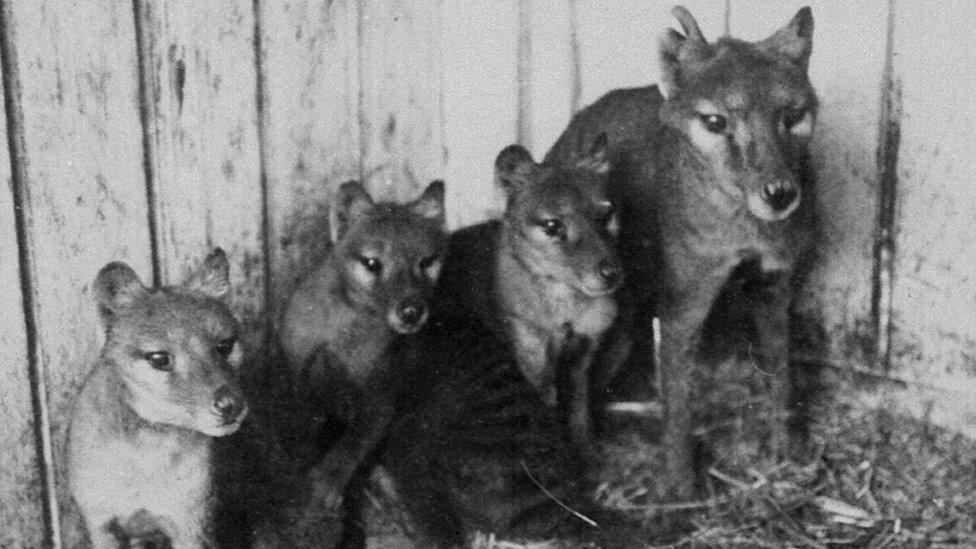Tasmanian tigers were in poor genetic health, study finds
- Published

The last Tasmanian tiger died in a zoo in 1936
Tasmanian tigers suffered from limited genetic diversity long before they were hunted to extinction, a study of DNA has found.
Australian scientists sequenced the genome of the native marsupial, also known as the thylacine.
It showed the species, alive until 1936, would have struggled to survive even without human contact.
The research also provides further insights into the marsupial's unique appearance.
"Even if we hadn't hunted it to extinction, our analysis showed that the thylacine was in very poor [genetic] health," said lead researcher Dr Andrew Pask, from the University of Melbourne.
"The population today would be very susceptible to diseases, and would not be very healthy."
He said problems with genetic diversity could be traced back as far as 70,000 years ago, when the population is thought to have suffered due to a climatic event.
The researchers sequenced the genome from a 106-year-old specimen held by Museums Victoria.
They said their study, published in the journal Nature Ecology and Evolution, is one of the most complete genetic blueprints of an extinct species.
The research provides insights into the thylacine's appearance
Tasmanian tigers numbers declined when humans arrived in Australia tens of thousands of years ago, and again when dingoes appeared.
In the end they were pushed to the island of Tasmania, and hunted to extinction in the 19th and 20th centuries. Being isolated from the mainland was a key factor in having a limited gene pool, researchers said.
Species similarities
The study also offered further clues into the appearance of the species, which was the largest apex predator marsupial to survive into the 20th Century.
Tasmanian tigers had pouches like kangaroos where they carried their young, but the species was closer in resemblance to dogs.
The scientists found that thylacine skulls bore similarities to the grey wolf and red fox, despite the animals not sharing a common ancestor since the Jurassic period.
"Given the two species are so distantly related, the fact they have skulls almost indistinguishable from one another is incredibly amazing," Dr Pask said.
He called it an exceptional example of convergent evolution - where species which are not closely related evolve to look similar.
Reporting by the 大象传媒's Frances Mao